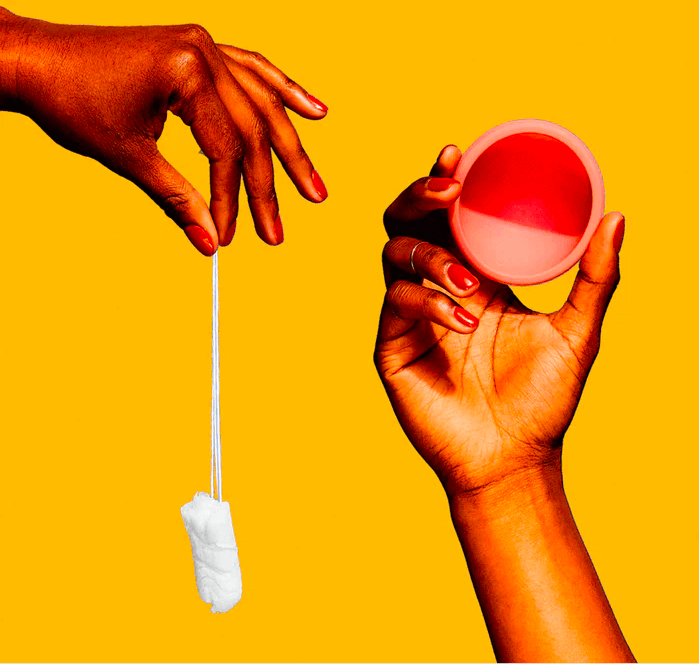Do you have a bulging sensation, pressure or discomfort around your pelvis? You may be feeling stressed while peeing or have trouble with your bowel movements.
These symptoms could be associated with a common condition called prolapse—but don't worry, you're not alone. 1 in 3 people experience prolapse at some point [1]. The good news is it’s easily treatable.
Today, we’ll look at what prolapse is, what causes it, and which organs are commonly affected by it. By the end of this, you'll:
- Have a better understanding of prolapse and its causes.
- Be more confident in managing it.
- Be able to identify its symptoms.
- Make informed decisions about your treatment options.
So, What Exactly Is Prolapse?
To put it simply, prolapse is when an organ moves from its normal position in your body. This happens because the tissues or muscles that normally hold the organ in place are weakened or loosened.
BUT it's important to remember there are different types of prolapse, which we'll explore below. Don't worry—understanding the different types will help you better understand your own condition and how to treat it. So let's get a bit technical!
Remember: All kinds of prolapse require medical treatment. However, the specific treatment will depend on the severity of the condition and symptoms.
But the good news is that with the proper care and treatment, most cases of prolapse can be successfully managed or treated. So if you're experiencing prolapse symptoms, don't hesitate to seek medical attention!
What Are the Most Common Causes of Prolapse?
Understanding the most common causes of prolapse is the first step to preventing or treating it. So, let’s take a look at some of the most common causes of prolapse:
- Aging
- Pregnancy and childbirth
- Menopause
- Heavy lifting
- Genetics/hereditary
- Chronic coughing
- Hysterectomy
- Chronic constipation
To help you better comprehend the causes of prolapse, we’ve broken them down for you in the table below. 🙂
Which Organs Are Commonly Affected by Prolapse?
1 - Rectum
Ever heard of rectal prolapse? It's a condition where your rectum can protrude into your vagina, often caused by straining during bowel movements. Not fun, right?
Luckily, there are ways to alleviate the symptoms of rectal prolapse.
One way is through pelvic floor muscle exercises, which can help strengthen those muscles and prevent prolapse. You should also try to improve your bowel habits and avoid straining when you have to go.
If you're experiencing symptoms like fecal incontinence, rectal discomfort, pain, or a sensation of fullness in your rectum, don't ignore them either. Talk to your healthcare provider about managing your symptoms and improving your pelvic floor health.
Remember, it's always better to address these issues sooner rather than later!
2 - Uterus
The uterus is one of the pelvic organs most commonly affected by prolapse. When the uterus bulges into the vagina, it’s known as uterine prolapse.
It happens because the pelvic floor muscles, which support the uterus, have weakened. Most people usually face uterine prolapse after pregnancy, childbirth, menopause, or aging. This, however, doesn’t happen to everyone.
If you're experiencing uterine prolapse, you might notice symptoms like:
- Feeling like you need to go to the bathroom all the time.
- Discomfort during sex.
- Urinary incontinence.
- Feeling like something is about to come out of your vagina.
- Persistent low back pain that makes it hard to pee or poop.
Again, you don't have to worry—there are things you can do to manage uterine prolapse!
Pelvic floor workouts like Kegels can help strengthen the muscles that support your uterus. And there are other treatment options, too, like pessaries (a device you insert into your vagina to hold your uterus in place) or surgery (as a last resort).
So don't be shy—talk to your healthcare provider about your symptoms and how to improve your pelvic floor health.
3 - Bladder
Let's talk about bladder prolapse, also known as cystocele. Sometimes, your pelvic floor muscles and ligaments weaken, causing your bladder to bulge into your vagina. This can be uncomfortable and cause a range of the symptoms we discussed above.
Fortunately, with the advice of your healthcare provider, cystocele is fixable.
Some treatment options may include exercising your bladder muscles, ligaments, and connective tissues through Kegels.
However, if the condition is severe, your doctor may suggest reconstructive surgery, which is rare. Usually, simple pelvic floor exercises save the day!
4 - Vagina
Unfortunately, your vagina can sometimes experience a condition called vaginal prolapse, where the top of the vagina weakens and falls into the vaginal canal.
This can be caused by pregnancy, vaginal deliveries, menopause, or just plain old aging.
Like with the above organs, if you're experiencing vaginal prolapse, you might feel like something is coming out of your vagina, or you might just be uncomfortable when having sex.
But don't worry; there are ways to treat it!
Pelvic floor physiotherapy is one option, and sometimes a pessary—a device that provides support and is inserted into your vagina—can help too.
So don't be afraid to talk to your doctor if you're experiencing symptoms of vaginal prolapse. Regular physical exercises can also help you prevent pelvic organ prolapse.
5 - Small Intestine
Our digestive system is pretty amazing, and the small intestine plays an important role. It helps break down our food and absorb nutrients to stay healthy.
Sadly, sometimes the small intestine can experience prolapse, which is known as enterocele or small intestine prolapse.
This occurs when the muscles in the pelvic floor weaken, and the small intestine bulges into your vagina after descending into the lower pelvic cavity.
If you're experiencing small intestine prolapse, you might notice symptoms like urinary incontinence (having trouble controlling your bladder) or difficulty having a proper bowel movement.
It can be uncomfortable to deal with, but the good news is that treatment options are available. The most common treatment is pelvis physiotherapy, but like with everything, it’s best to discuss with your doctor to see what’s best for you.
Therefore, if you're experiencing any of the symptoms mentioned above, don't hesitate to talk to your healthcare assistant and get the help you need.
Remember: Pelvic floor exercises like Kegels and lifestyle changes like avoiding heavy lifting can help re-strengthen the pelvic floor muscles. Surgery is the last resort if your prolapse is severe.
Can Periods Cause Prolapse?
Yes, it's totally possible for periods to contribute to pelvic organ prolapse (POP). Heavy menstrual bleeding can cause your uterus and vaginal walls to expand and stretch, putting added pressure on your pelvic floor muscles. But there is a way to prevent this from happening.
Using a nixit menstrual disc could be an option for those experiencing prolapse during their periods.
Unlike tampons, nixit’s flexible and ultra-comfortable disc-style menstrual cup fits snugly into your vagina, collecting menstrual blood without putting pressure on your vaginal walls.
This has various benefits, but one such advantage is that you won't have to strain during bowel movements—which can also contribute to prolapse.
And that's not all, using nixit’s menstrual cups is a great option if you're healing from prolapse. They’re a sustainable, painless, and strain-free solution that can help you feel more comfortable and confident during your periods.
The great thing about nixit’s menstrual cups is that they fit perfectly into your vagina without expanding as traditional tampons do, which can put added pressure on your pelvic muscles.
This means you can feel more relaxed and at ease, knowing you're doing something good for your body.
Don't just take our word for it, though—Jessica P tried a menstrual cup, and now they can't use any other menstrual product.
If you're new to using a menstrual cup, it's totally normal to have questions about keeping everything clean. Not to worry, we've got you covered!
We're thrilled to offer our nixit menstrual cup cleanser & vaginal wash—a 100% natural foaming cleanser designed to help you have a clean and comfortable experience. Our cleanser is gentle enough for your most sensitive areas but strong enough to get the job done.
You can trust that our cleanser will help keep your vulva (if you choose to use more than just water) and menstrual cup feeling fresh and clean. It's the perfect addition to your menstrual care routine and will give you peace of mind knowing everything is as hygienic as possible.
Manage Prolapse Like a Pro - Especially During That Time of the Month
When dealing with a prolapse, especially during your period, it's important to avoid activities that put excessive pressure on your pelvis. You should also watch out for signs and symptoms of prolapse so you can get treatment early.
If you're unsure about your symptoms, don't hesitate to consult your healthcare professional for a proper diagnosis.
And if you're interested in learning more about nixit, check out our blog, we've got tons of great information to share!
Source:
[1] https://www.hopkinsmedicine.org/health/conditions-and-diseases/vaginal-prolapse








